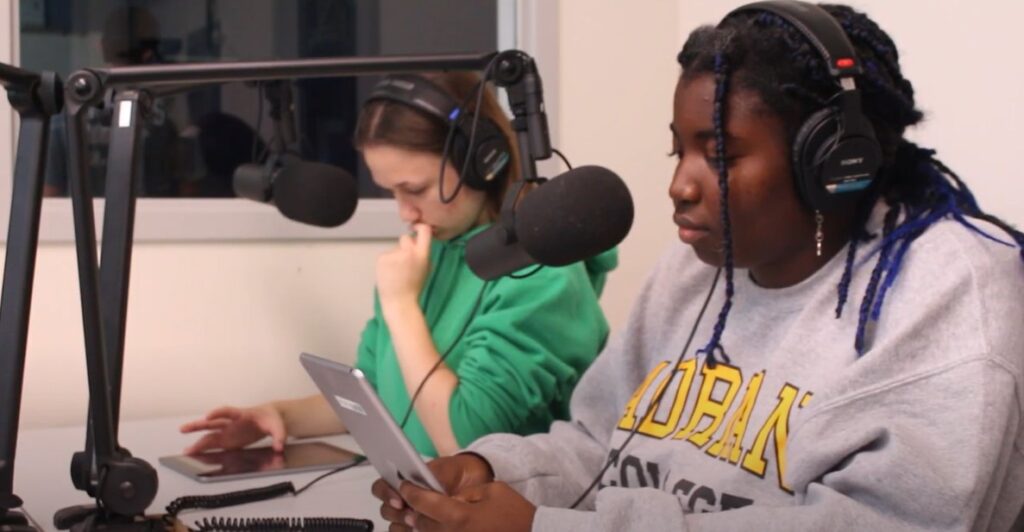Ask anyone who’s been charged with social media oversight for an organization or brand, and they’ll tell you: Publishing isn’t the hard part. In fact, challenges abound, and they’re especially multi-faceted for social media accounts belonging to schools and school districts–first amendment considerations, records requests and FOIA, negative feedback and commentary, public perception and sentiment, bond issues, cyberbullying and student behavior infractions (to name a few). What’s more, many school and district PR and communications teams are small, with limited time and resources–they can’t possibly be everywhere they need to be to capture content in real-time. In short, schools have unique needs when it comes to managing content and communications on social media that extend far beyond the scheduling and publishing pieces. Technology can help. As you’re exploring systems and vetting solutions, here’s a breakdown of the functionality especially pertinent to schools and school districts.
Publishing vs. Actively Managing
There are a number of important differences between publishing content to social media and actively managing school social media accounts. Publishing is a largely passive act involving scheduling or simply posting updates. There are certainly tools that do this: A simple widget or publishing function can make it possible for schools to repost an announcement or update from a newsletter, internal app, newsfeed, or website to one or more school social media pages. While this can be helpful, it’s a very small piece of the puzzle.
For schools, social media management can be organized into five core areas:
- Sourcing and curating content (including photos, videos, and stories).
- Monitoring inbound content and commentary on school social media pages.
- Risk and crisis management and response strategy.
- Archival, documentation, and legal compliance.
- Engagement, student voice, and real-world learning.
Sourcing Stories, Photos & Videos
Updates and announcements are important, and putting them out on social media can be useful, but they’re not the only thing. Especially in the case of schools, the real content wins are engaging stories about the people, events, and moments happening in different areas of your school community. Behind-the-scenes footage from school musicals and plays, updates about what’s happening on the field or court, and highlights from student achievements, learning, and engagement all help tell your school’s story. Focusing on people and innovative projects, educators, and community connections not only boosts morale but also showcases your school and the wonderful students and staff behind it.

Culinary arts students from Middlesex County Magnet Schools (a Class Intercom school in East Brunswick, NJ) prepare a dish for guest judges from the American Culinary Federation.
For educators, administrators, and communications professionals, sourcing these stories can be a real challenge. First, you have to know about them, then you have to be present to capture photos and details about what’s going on. This makes building a team of content creators or, at very least, people across your school community who can help you source photos, videos, and stories, especially crucial. To do that, you need an easy, inexpensive, administration-approved way to collect content from teachers, administrators, school and district PR and communications professionals, and even students. In fact, especially students: They’re often on-the-ground and in-the-know about the most interesting and relatable things happening in your school community. (More on student involvement later.)
So, it’s great to have tools that make it easy to publish and even schedule social posts, but if you don’t have compelling content to begin with and a usable process for collecting and filtering through it, executing social media well can be extremely difficult.
Moderation & Management
Schools must be proactive when it comes to account access and user management, and they need a tool that makes it easy. Those with moderator and admin level access need to be able to keep a close eye on commentary from students, staff, community members, and the public at large across their social channels. This work can multiply quickly when you consider that most schools have active accounts for several areas (e.g. the main school account, one or more pages for athletics, and accounts for clubs or extracurriculars) across multiple channels like Facebook, X (Twitter), Instagram, and LinkedIn. In short, a school can quickly be looking at 10 or 20+ accounts and audiences to keep an eye on.
Inbound communications on social media can come from a user (either affiliated with the school/district or not) tagging one of your pages in a social post, commenting on posts, sending a direct message, leaving a review, sharing/re-sharing, or otherwise engaging with your pages. Schools must act swiftly to address this inbound content–whether answering questions, escalating needs or concerns, acknowledging positive feedback, or managing negative commentary. In doing so, keep in mind that there are legalities around censoring commentary and feedback on school social media pages, making response management and automatic documentation especially critical when it comes to the systems and processes you use to manage school social media.
Risk & Crisis Management
Social media presents unique risk and crisis management challenges in that information, misinformation, and scandal can spread quickly. The ability to remain in-the-know about the virality and the potential virality of negative or sensitive content is crucial. For schools, social media management tools need to have built-in flags for specific keywords that immediately notify admins and moderators any time they are used either in outgoing posts by those working on behalf of the school to create and schedule content or in inbound comments or communications from followers.
Keyword flagging can also be helpful for staying on top of communications from specific people–perhaps those who are apt to provide critical feedback or misleading information. With the right school social media management tool, all communications on school pages from these repeat offenders can be flagged for review and potential follow up by one or more moderators.
Access permissions and controls are also an important piece of risk management for schools. Schools must first get a handle on rogue social media accounts. These accounts can pose substantial legal risk, in addition to being a potential source of scandal and misinformation. Reeling in rogues is step one to achieving a credible and well-organized social media presence. Step two is to ensure intentional access permissions across every channel (ideally managed in a secure and central location).
Archival & Records Requests
Schools must adhere to laws and regulations around public access to information, including the Freedom of Information Act (FOIA). And, since the FOIA lists electronic communications as public records, school social media accounts and their communications are considered public information and must be archived in all U.S. states in case of records requests.
While regulations vary from state to state, it’s important to consider archival, and know that it doesn’t need to be a drain on time or resources; you also don’t need to implement and manage a separate or costly solution in order to be covered. Simply be sure your social media management platform includes unlimited and automatic archival.
Real-World Learning & Student Engagement
Utilizing social media as a tool for real-world learning and student engagement transforms platforms like Facebook, Instagram, and others into meaningful lessons in digital citizenship, storytelling, content creation, marketing, advocacy, and more. With the right platform and curricular supports, schools can actually engage students in content production. Typically that happens by way of media teams, broadcasting students, and students in classes like journalism, English, media, graphic design, business, advertising, and media ethics. The benefits are substantial. Schools are able to advance broader initiatives like student voice, real-world learning, portfolio building, and college and career readiness. Students learn by doing, taking skill building to the next level. At the same time, schools benefit from an influx of compelling, engaging content that has a uniquely authentic perspective.

Students at Royal Oak High School (a Class Intercom school in Royal Oak, MI) create podcasts for “Raven Radio” as part of their advanced TV class.
Class Intercom Checks Every Box
Class Intercom was built by educators and school administrators for educators and administrators. We know and understand the unique challenges facing school PR and communications professionals at the district level and across school buildings. It’s a robust, cost-effective solution with unlimited users, unlimited and automatic archival, and key moderation and management features that keep schools on top of socials. Ready to learn more? Follow the link below to connect with our team.
